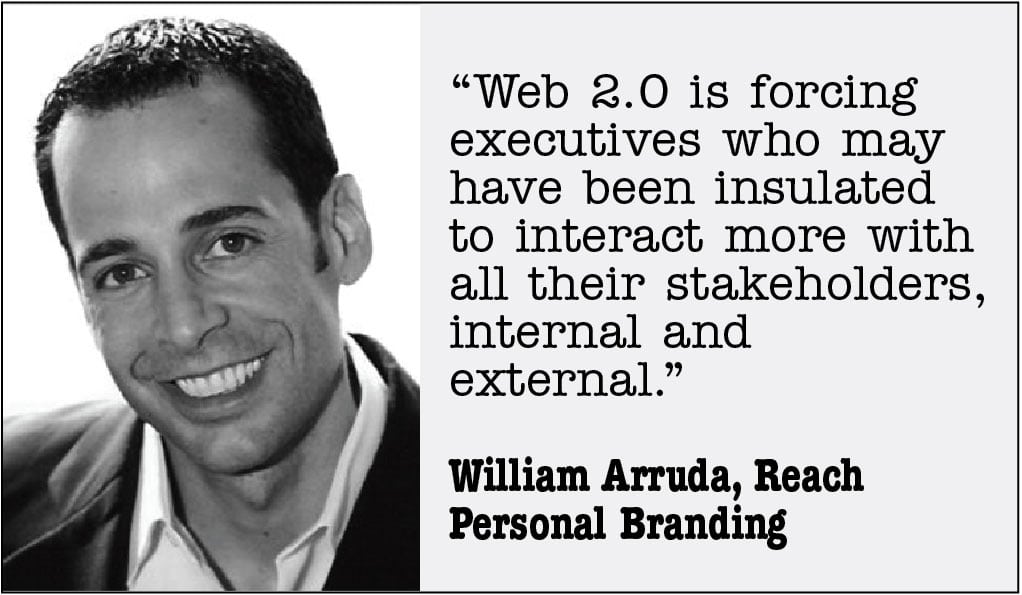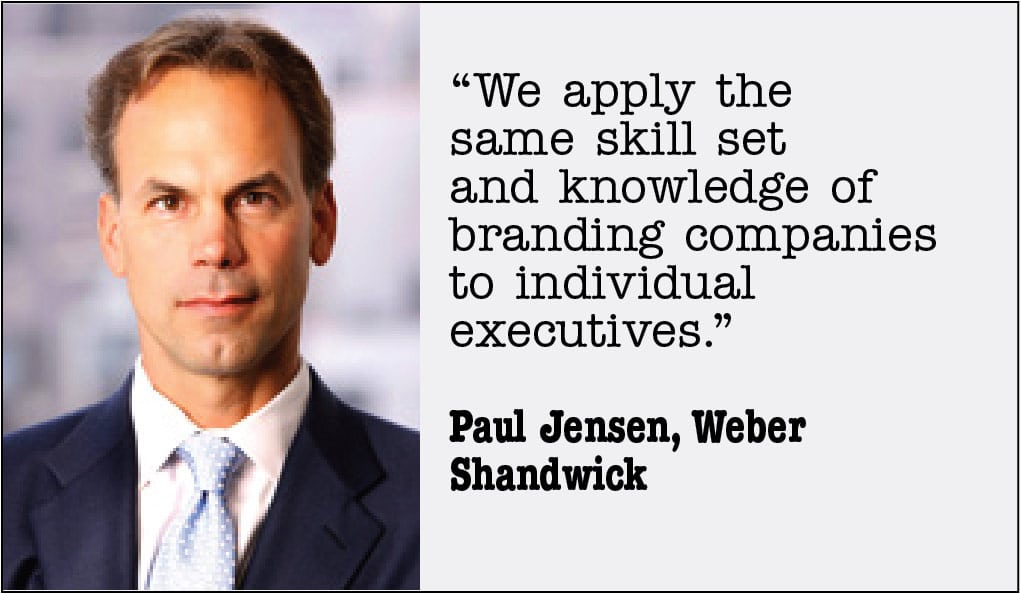With the economic meltdown, the public’s lack of trust in business and, most recently, the death of Steve Jobs, more attention than ever is being paid to the chief executive as a brand, and the importance of the values that not just the CEO, but the entire executive leadership team, should impart both internally and externally.
 |
Indeed, as business values become more focused on being a “good company”—as the November 2011 issue of Harvard Business Review trumpets on its cover—CEOs no longer can afford to stay hidden within the bowels of their organization, which is what many did a decade ago, says William Arruda, founder and president of New York-based Reach Personal Branding.
When Arruda entered the corporate branding business in 2001—working with clients such as KPMG, Lotus and IBM—executives didn’t understand their role in being visible across their entire brand’s communications, he says. “It’s Web 2.0 that has made business more human,” says Arruda. “It’s forcing executives who may have been insulated to interact more with all their stakeholders—internal and external.”
RELUCTANT LEADERSHIP
 |
Which, for some execs, isn’t the easiest thing to do. “Some executives just don’t want to be very visible,” says Paul Jensen, chairperson of Weber Shandwick’s North American corporate practice. Why? First, they’re extremely busy, says Jensen. And second, if their company has gone through a major crisis, executives may not want to be in the spotlight—even on a safe thought leadership platform—for fear of saying the wrong thing.
Arruda agrees that today’s business environment is tough on executive brands, as companies look to rebuild relationships with their communities. “They need to engage and be visible, but it’s hard for them,” says Arruda.
Research confirms Arruda’s assertion. In IBM’s 2010 Global CEO study of 1,500 chief executives, when asked what the top leadership qualities should be given the state of the economy, creativity (60%) and integrity (58%) took the top slots, while openness was way down the list at 28%. Yet today, executives really have no choice but to be more open and visible. In fact, says Arruda, they must be the face of the company.
Just how do communicators assist in making executives more visible and aligning their own values with those of the business?
 |
Leslie Mayer, president and CEO of Mayer Leadership Group. takes a rather tough tack. “I believe a CEO should be vetted by the board at the front end as to the alignment between her/his values and the company’s brand requirements,” says Mayer. “Any intelligent person can adapt to promoting differing brand values; however, the more powerful and winning combination is one where it is a natural fit.”
Mayer goes on to say that effective executive branding stems from being a committed storyteller. “CEOs who take the time to message their values have the most consistent and committed brand execution, because everyone knows what the company stands for,” says Mayer.
She tells the story of a CEO she worked with who had a slogan he’d read in the newspaper near him at all times: “This Is What We Stand For—You Can Count on It.”
STEPS TO ADVANCING EXECUTIVE BRANDS
Arruda recommends looking at the same processes you might use for evaluating and nurturing your corporate brand in creating an effective executive brand. He offers three steps a communicator can take to advance an executive’s brand:
1. The first and most important step is unearthing the true brand. This includes using coaching skills to work with the executive to understand his or her true promise of value. From this, you can define personal brand positioning and distill key differentiators into a one-page brand profile.
2. Develop an executive communications plan within the context of the corporate communications plan. “This means weaving the executive’s brand into the corporate communications plan and vice versa,” says Arruda.
3. Work with the executive to manage his/her brand environment. “This means ensuring that every aspect of what surrounds the executive is on-brand,” says Arruda. “This includes image management, building brand tools, providing required training—like communications skills training or media training—and developing a plan to diminish any negative brand attributes.”
EXECUTIVE EQUITY
At Weber Shandwick, says Jensen, executive branding is called Executive Equity and Visibility. “We apply the same skill set and knowledge of branding companies to individual executives,” he says. “What does an executive want and need to stand for, and what should their tone and message be?” And that scrutiny is applied not just to the CEO, but across the C-suite. Jensen emphasizes that it’s as much about reaching internal audiences as it is reaching external audiences.
With the passing of Apple’s Jobs, Arruda wonders how many CEOs of major corporations are known by the public. “Just who is the CEO of Exxon?” he asks (answer: Rex Tillerson). In Apple’s case one word connected Jobs’ brand value with the company’s: genius.
Not every organization can have a CEO brand that fits like a glove with the corporate brand. But with careful planning and coaching, you could get close.
CONTACT:
William Arruda, [email protected]; Leslie Mayer, lmayer@mayerleadership; com; Paul Jensen, [email protected].
